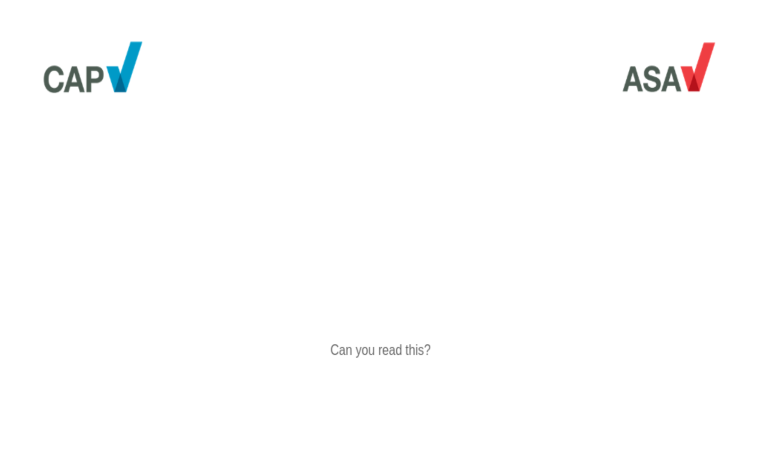
Today we have published research that has found that viewers can struggle to read and comprehend text in TV ads that contains important qualifying terms and conditions to an offer, known as on-screen or superimposed text – including what is sometimes referred to as small print. That can lead to confusion or disappointment when a deal isn’t what people understood it to be and risks misleading consumers. In response, the Broadcast Committee of Advertising Practice (BCAP) has announced changes to the standards expected of on-screen text on our TV screens.
On-screen text is a way for advertisers to convey qualifying information to TV viewers and is overlaid onto the ad, usually appearing at the bottom of screen. The BCAP Code requires that ads must not mislead consumers, must state significant limitations and qualifications to a headline claim, and qualifications must be presented clearly.
We carried out a review of on-screen text in TV ads to find out how they work for viewers. We put out a public call for evidence, analysed the submissions and other relevant literature, and commissioned qualitative research with TV viewers across the UK, carried out by Define. We interviewed 138 people in their own homes and the research found that a majority found it difficult to read on-screen text and that this was more prevalent amongst older viewers.
Participants reported that it was difficult to read on-screen text against a moving background, where white text was presented on a white background, and when text was too small, squashed, not on the screen long enough or where there was too much information to read and take it all in. Also, the use of acronyms, lots of numerical information or too much going on in the ad, for example loud music and people shouting, made some ads hard to comprehend.
In order to address the concerns identified in the research, BCAP has published new standards on the presentation of on-screen text that TV advertisers will be expected to abide by, including:
- Sufficiently emphasising particularly significant qualifying information
- Adopting a stricter approach to ensuring an adequate contrast between the on-screen text and background
- Taking greater care over the choice of typeface to avoid the use of stretched or elongated text
- Allowing viewers sufficient time to read on-screen text
The new standards will come into effect on 1 March 2019.
Guy Parker, Chief Executive of the Advertising Standards Authority, said:
“Our research has told us that TV viewers can be misled when they struggle to read on-screen text that contains important information. It’s vital that any qualifications are presented clearly and I welcome BCAP’s tough new standards to ensure that happens.”
Shahriar Coupal, Director of the Broadcast Committee of Advertising Practice, said:
“As an evidence-based regulator, we welcome the ASA’s research. We’ve acted promptly to update our guidance and provide greater clarity on the acceptable presentation of on-screen text in ads, benefitting advertisers and viewers alike.”
Read the ASA's Research now, or download:
BCAP's Regulatory Statement including,
Annex A Annex B Define's Research for the ASA on Superimposed text
More on
-
Keep up to date
Sign up to our rulings, newsletters and emargoed access for Press. Subscribe now.


